Alopecia and Hair Loss
Understanding and Treating Alopecia Areata
Alopecia areata is an autoimmune skin disease that causes hair loss on various parts of the body when the immune system mistakenly attacks hair follicles. This condition affects over 6.5 million people, including both children and adults, leading to sudden hair loss in small, round patches on the scalp, as well as hair loss in other areas such as the eyebrows, eyelashes, and face. Additionally, some individuals may experience nail changes like pitting or ridges.
If you are experiencing hair loss or other symptoms of alopecia areata, scheduling an appointment with a dermatology provider at Tru-Skin is your first step to treatment. Our expert team is equipped to diagnose and treat a wide range of skin and hair conditions, providing personalized treatment plans that may include topical treatments, corticosteroid injections, or other innovative therapies.
Don't let alopecia areata control your life—take the first step towards effective treatment and regain your confidence by scheduling an appointment with Tru-Skin today. Our dedicated professionals are committed to helping you achieve healthy, beautiful hair and improving your overall well-being.
Examples of Alopecia and Hair Loss
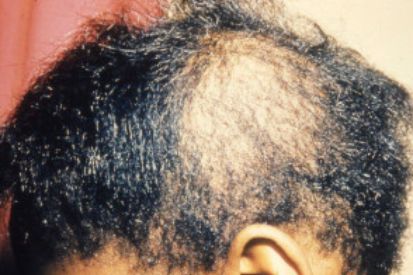
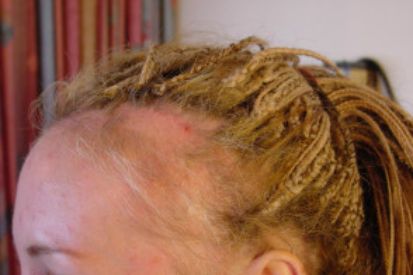
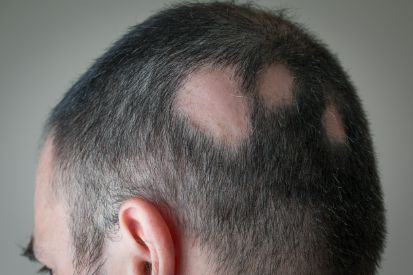
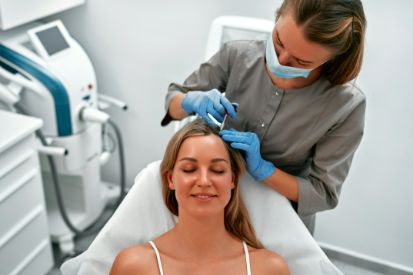
Symptoms of Alopecia Areata
- Hair loss over the body, typically in patchy circular formations.
- Hair that’s thin close to the scalp but is thicker at the ends.
- Hair loss on one side of the scalp,
- Significant and otherwise unexplained hair loss in a short period of time
- Pitted or pocked fingernails.
Causes of Alopecia Areata
- Your body’s immune system attacking your own hair follicles, shrinking them and drastically slowing the production of hair, leading to baldness when production stops.
- Polygenic disease, meaning that several genes from both parents must be inherited for the disease to be passed on.
Three Widely Known Forms Of Alopecia Areata
Alopecia Totalis: This form causes total hair loss on the scalp.
Alopecia Universalis: Characterized by total hair loss all over the body, including the scalp and face. This form isn’t as common.
Alopecia and Hair Loss FAQs
The reversibility of hair loss depends on the cause. Some types of hair loss are reversible with appropriate treatment, while others may be permanent.
It's normal to lose some hair daily as part of the natural hair growth cycle. On average, individuals may shed 50 to 100 hairs per day. However, significant hair loss that leads to visible thinning or bald patches may indicate an underlying issue. If you notice an increase in hair shedding or changes in your hair density, it's advisable to consult with your dermatologist for evaluation.
Certain hairstyles that pull tightly on the hair, such as tight ponytails, braids, or extensions, can cause a type of hair loss known as traction alopecia. Additionally, the use of harsh hair products, frequent use of heat styling tools, or chemical treatments can contribute to damage and breakage. Choosing gentle styling practices and using products suitable for your hair type can help prevent unnecessary stress on the hair shaft.
Androgenetic alopecia, commonly known as male-pattern baldness or female-pattern baldness, can affect both men and women. However, the pattern and progression of hair loss may differ between the sexes. Men often experience a receding hairline and balding at the crown, while women may notice general thinning over the top of the scalp. Other types of hair loss, such as telogen effluvium or alopecia areata, can also affect both genders.
Watch: Hair Loss Treatment at Tru-Skin Dermatology in Central Texas
Alopecia Areata Treatment Options
We know how much this disease can affect your life, so we offer viable, tested alopecia areata treatment options. This disease often occurs with other immune conditions, such as vitiligo, atopic dermatitis, hypothyroidism, Addison’s disease, anemia, lupus, diabetes, and others. When you see us, we’ll take a whole history so we understand your unique medical profile, adjusting treatments if needed to suit your other conditions.
When you come to our office, we’ll have a consultation where we get to know you, your symptoms, and your struggle, then decide together what the best course of treatment is. If you aren’t seeing the results you want, we’ll have periodic checkups to adjust your alopecia areata treatment until we find what works best for you.
Featured Blogs

- General Dermatology
- Skin Care
Having sensitive skin can be a real challenge. In this blog post, we’ll give you some insights on how to develop an effective skincare routine for your sensitive skin, so you can keep it healthy and glowing without any irritations.
Read More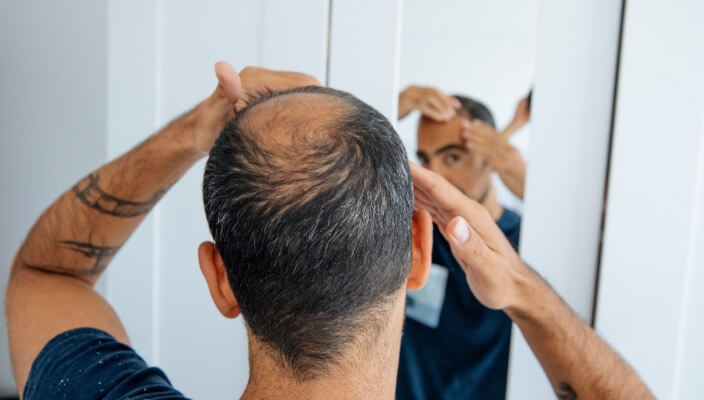
- General Dermatology
Read this blog to learn more about the causes of hair loss and the many treatment options offered at Tru-Skin Dermatology.
Read More
- General Dermatology
Experiencing postpartum hair loss? Tru-Skin Dermatology in Austin, TX offers in-office treatments and products like Nutrafol and SEEN to help you restore fuller, healthier hair.
Read MoreFeatured Products for Hair Loss
Check your local office for current stock!
Check your local office for current stock!


